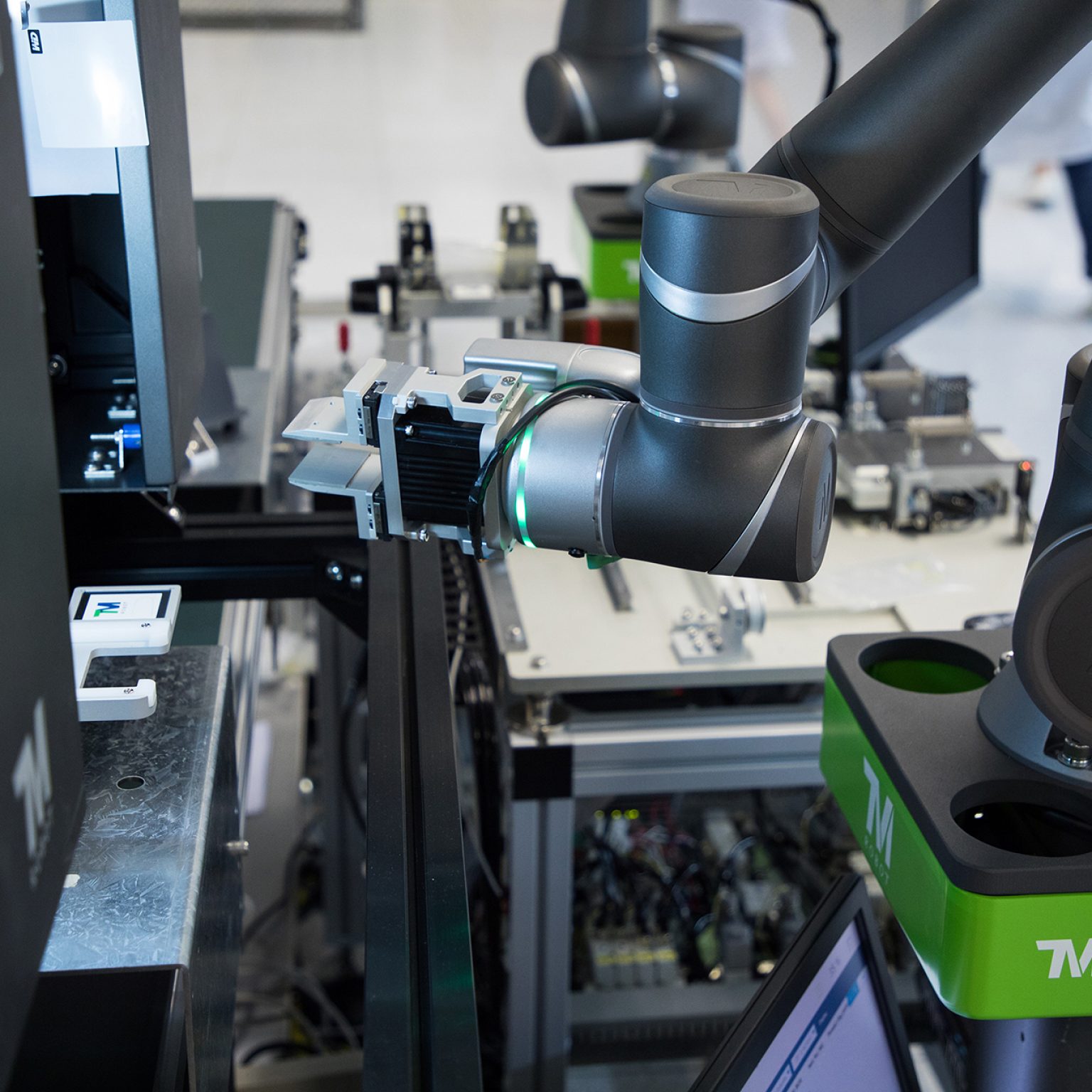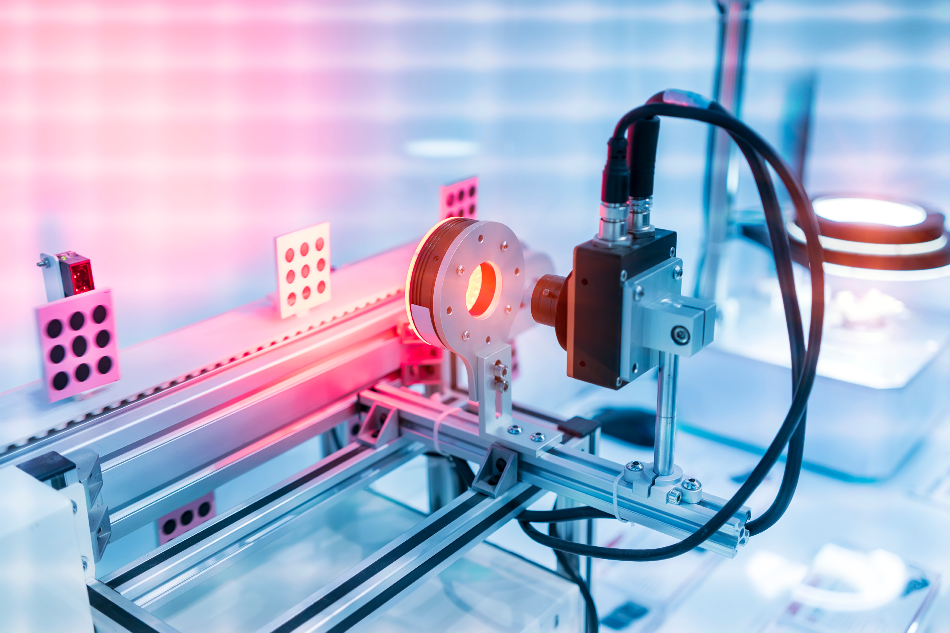Why fibre testing equipment is critical in automated inspection
Wiki Article
The Importance of an Optical Measurement System in Industrial Applications
Optical measurement systems play a vital function in industrial applications. They give high precision and facilitate non-contact measurement, which is essential for protecting sensitive parts. These systems improve functional performance and advertise quality assurance. Their application is not without difficulties. Recognizing their importance and the intricacies involved can brighten their transformative potential in modern-day manufacturing. What are the certain advantages and obstacles that these systems present?Recognizing Optical Measurement Systems
Optical measurement systems play a vital role in numerous commercial applications by supplying accurate and precise information collection. These systems use light to measure physical properties such as dimensions, surface area profiles, and product attributes. The fundamental components normally include lasers, video cameras, and sensing units that catch and assess light mirrored from items. By using strategies such as interferometry and photogrammetry, these systems can discover minute changes in form and size, which are critical for quality assurance and product consistency.Furthermore, optical measurement systems are non-contact, allowing them to analyze delicate or complex products without causing damage. They are functional, discovering applications in areas like aerospace, automobile, and electronic devices making. The integration of innovative software for data analysis improves the capability of these systems, making it possible for real-time tracking and comments. As industries evolve, the value of optical measurement systems remains to grow, supporting the need for higher accuracy and performance.Secret Advantages of Optical Measurement in Manufacturing
While conventional measurement methods usually involve physical get in touch with and can present mistakes, the adoption of optical measurement systems in producing offers substantial benefits. These systems use non-contact methods, decreasing the danger of damages to sensitive components and making certain the stability of dimensions. Optical measurement gives high precision and precision, allowing suppliers to achieve limited tolerances essential in competitive markets.Additionally, the speed of optical measurement systems improves performance. fibre testing equipment. Fast data acquisition enables for real-time surveillance, promoting prompt changes in production processes. This efficiency leads to minimized waste and boosted resource allocation.Furthermore, the convenience of optical systems suits a vast array of products and geometries, making them suitable for numerous applications. Their capacity to integrate flawlessly with automation technologies sustains Sector 4.0 campaigns, promoting smarter making atmospheres. In general, the key benefits of optical measurement add significantly to improving quality assurance and functional effectiveness in modern-day manufacturing settingsApplications of Optical Measurement Solutions
Optical measurement systems play a necessary duty in different industrial applications, especially in improving precision throughout manufacturing procedures. They are important to quality assurance and guarantee, ensuring that items satisfy strict requirements. In addition, these systems support research and development campaigns by supplying accurate data for innovation and renovation.Precision in Manufacturing Processes
In modern-day manufacturing, high precision is crucial for making certain item high quality and functional effectiveness. Optical measurement systems provide advanced capabilities that significantly boost accuracy during the manufacturing procedure. These systems make use of light and imaging modern technologies to record in-depth measurements of elements, enabling manufacturers to accomplish tight tolerances and precise measurements. By integrating optical measurement right into production operations, organizations can rapidly recognize deviations from requirements, thus minimizing waste and reducing rework. The non-contact nature of optical measurements allows for evaluating fragile or delicate products without danger of damage. Eventually, the adoption of optical measurement systems fosters a society of accuracy in manufacturing, leading to boosted efficiency and competition in the marketplace.
Quality Control and Assurance
Quality guarantee in producing heavily depends on exact measurement strategies to assure that items fulfill well-known standards. Optical measurement systems play a pivotal role in this procedure, enabling accurate assessments of measurements, surface area top quality, and various other crucial features of made items. By utilizing high-resolution imaging and innovative evaluation formulas, these systems spot inconsistencies from requirements, making sure consistency throughout production. In addition, optical dimensions can be non-destructive, preserving the stability of items while promoting rapid assessments. The assimilation of these systems right into high quality control methods boosts performance and decreases waste, ultimately contributing to improved item dependability. As industries undertaking for excellence, the adoption of optical measurement technologies comes to be significantly necessary for keeping competitive advantage and consumer satisfaction.
Study and Advancement Applications
As markets endeavor for development, optical measurement systems have become an important tool in research study and advancement applications. optical fibre diameter analyser. These innovative systems supply exact dimensions of products and elements, allowing engineers and researchers to acquire critical insights into their homes and performance. Optical measurement technologies, such as laser scanning and interferometry, help with the fast prototyping of new designs and the optimization of existing products. By recording high-resolution information, researchers can recognize problems and examine the effect of numerous parameters on product functionality. In addition, these systems sustain interdisciplinary collaboration, linking gaps between various disciplines. The integration of optical measurement systems right into R&D refines eventually increases development timelines and promotes the development of cutting-edge options in various industrial fieldsComparing Optical Measurement to Traditional Methods
In comparing optical measurement systems to traditional techniques, several crucial elements emerge, including precision and accuracy. In addition, the rate of measurement and cost-effectiveness play significant functions in identifying the viability of each strategy for commercial applications. This assessment highlights how developments in optical technology might provide benefits over standard strategies.Accuracy and Precision
Optical measurement systems use significant advantages in accuracy and precision contrasted to typical measurement approaches. These systems use advanced innovation, such as lasers and high-resolution video cameras, to catch dimensional information with very little error. On the other hand, traditional approaches typically depend on mechanical tools that can present variability as a result of human mistake or material wear. Optical systems can attain micrometer-level accuracy, making certain consistent results also in complex geometries. In addition, they provide non-contact measurement, minimizing the risk of damaging sensitive elements. This capacity is particularly advantageous in markets where tolerances are critical, such as aerospace and auto manufacturing. As a result, the adoption of optical measurement modern technology boosts top quality control and reduces the probability of problems, inevitably boosting total manufacturing efficiency.Rate of Measurement
The advantages of optical measurement systems prolong past precision and precision to include substantial renovations in measurement rate. Conventional measurement techniques often call for lengthy setups and hand-operated computations, which can reduce production processes. In contrast, optical systems use sophisticated modern technologies such as laser scanning and imaging, allowing quick information acquisition and handling. This effectiveness enables for real-time dimensions, helping with quicker decision-making in manufacturing environments. The ability to capture large volumes of information quickly boosts throughput and performance, giving companies a competitive side. Furthermore, with minimized measurement times, optical systems decrease downtime connected with inspections, better streamlining procedures. As a result, the speed of measurement in optical systems significantly adds to overall functional effectiveness in commercial applications.Cost-Effectiveness Analysis
A thorough cost-effectiveness analysis discloses that optical measurement systems usually provide substantial monetary advantages over traditional techniques. These systems generally decrease the demand for substantial physical configurations, lessening labor expenses and downtime during measurement procedures. Optical techniques can also produce faster results, bring about increased performance and decreased operational expenditures. In addition, the precision supplied by optical dimensions lowers the likelihood of costly errors, which can arise from manual treatments and typical strategies. Over time, the preliminary financial investment in optical technology is frequently offset by savings in resources, time, and improved product quality. Markets that adopt optical measurement systems might find themselves not just improving effectiveness however additionally achieving a more favorable cost-benefit ratio compared to conventional techniques.The Duty of Automation in Optical Measurement
While many industries progressively count on accuracy and performance, automation has become an essential component in improving optical measurement procedures. By integrating automated systems, organizations can greatly boost measurement precision and minimize human error. Automated optical measurement systems make use of sophisticated algorithms and sensors to give real-time information evaluation, assisting in quicker decision-making and process adjustments.Additionally, automation permits constant dimensions throughout different production runs, making certain that top quality requirements are preserved. The scalability of automated optical measurement systems makes them ideal for varied applications, from quality assurance in producing to inspection in semiconductor production.Furthermore, these systems can be perfectly incorporated into existing manufacturing arrangements, promoting a smooth change towards extra reliable operations. Generally, the role of automation in optical measurement is crucial, using improved dependability, minimized labor costs, and improved operational effectiveness, inevitably driving industrial competitiveness.Challenges and Considerations in Implementation
Implementing optical measurement systems, despite the advantages of automation, offers different obstacles and factors to consider that companies need to browse. One substantial challenge is the assimilation of these systems into existing operations, which might require substantial adjustments in procedures and staff member training. Organizations must additionally attend to the compatibility of optical measurement modern technologies with existing equipment and software.Additionally, the variability of materials and environmental problems can influence measurement precision, requiring robust calibration and upkeep methods. Expense is an additional important factor to consider, as initial investments can be substantial, and organizations should evaluate these expenses against potential efficiency gains. Information management additionally poses obstacles, as the quantity of details produced calls for effective systems for storage space, analysis, and interpretation. Ensuring compliance with sector requirements and regulations adds an additional layer of complexity to the implementation procedure, requiring mindful planning and implementation.Future Trends in Optical Measurement Innovation
As markets continue to progress, advancements in optical measurement innovation are established to transform their functional landscapes. Emerging patterns suggest a shift towards raised automation and assimilation with expert system, improving the accuracy and efficiency of dimensions. Adaptive optics is obtaining grip, enabling systems to readjust in real-time to varying environmental conditions, therefore minimizing errors. In addition, the miniaturization of optical sensing units is enabling their deployment in a lot more portable and diverse settings, expanding application possibilities in sectors such as aerospace and manufacturing.Additionally, the development of 3D optical measurement methods is reinventing quality assurance processes, offering even more substantial data analysis. Developments in information handling formulas are additionally anticipated to improve the interpretation of complicated dimensions, making understandings much more available. Jointly, these patterns reflect a future where optical measurement modern technology not only enhances precision but also improves functional dexterity, positioning industries to much better meet progressing needs.Frequently Asked Questions
Just How Do Optical Measurement Systems Ensure Information Precision?
Optical measurement systems guarantee data accuracy through precise calibration, progressed algorithms, and high-resolution imaging. These elements collaborate to minimize errors, enhance measurement consistency, and offer trusted outcomes important for different commercial applications and procedures.What Is the Common Life-span of an Optical Measurement System?
The regular life expectancy of an optical measurement system varies, usually varying from 5 to fifteen years. Elements affecting long life include usage strength, environmental conditions, upkeep methods, and technological improvements that may necessitate upgrades or substitutes.
Can Optical Measurement Systems Be Customized for Details Industries?

What Training Is Required for Operating Optical Measurement Systems?
Educating for running optical measurement systems typically includes understanding robotic vision system elements, software application use, calibration methods, data analysis, and safety and security protocols. Participants usually take part in hands-on technique and may finish qualification training courses to boost their efficiency.How Do Ecological Factors Impact Optical Measurement Results?
Environmental variables, such as temperature level, moisture, and lights problems, significantly influence optical measurement outcomes. Variants in these components can cause mistakes, affecting the accuracy and integrity of measurements taken by optical systems in various setups.Report this wiki page